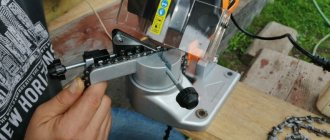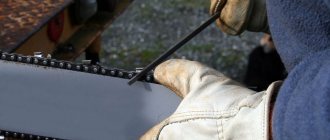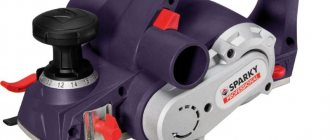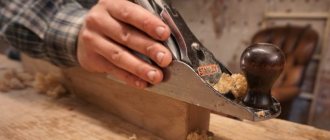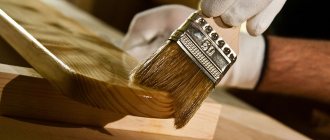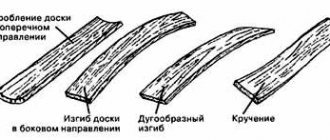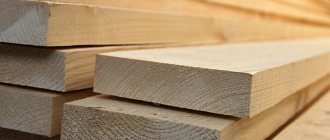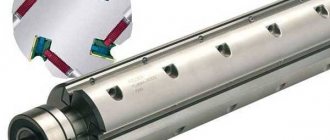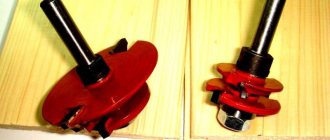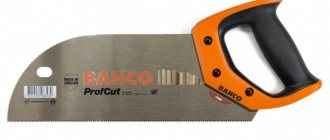The condition of the working tool determines the quality and efficiency of its use. In this regard, the ax places increased demands, since the specifics of its use involve high loads on the cutting edge. It produces not cutting, but chopping movements, and constant impact quickly destroys the sharpening. However, if the cutting edge is formed correctly, taking into account the specifics of the work and the characteristics of the material being processed, the period of effective work between sharpenings can be significantly increased. Let's consider this issue in more detail.
Ax sharpening options
There are different types of axes. There is a construction version, and there are carpentry and lumberjack models. A classic cleaver is used to prepare firewood. When cutting meat, meat axes are used.
When engaged in hunting and tourism - options of the same name. Any blade will wear out with constant use.
In production, each ax is sharpened before delivery, and regrinding is required when the cutting edge is seriously worn.
At home, the independent process of sharpening a tool can be done in two ways:
- Electrically driven equipment;
- Manually using an abrasive wheel and sanding paper.
For proper sharpening, the following must also be taken into account:
- Density, hardness and relative humidity of wood;
- Type of processing;
- Blade steel grade;
- The degree of hardening of the working edge.
In addition to the sharpening angle, it is important to consider the width of the chamfer of the cutting surface. To work with thin wood, a wider bevel is required. And, for example, when cutting thick trees, it should be smaller in order to reduce pressure on the blade.
Ax sharpening degree
The sharpening angle for various types of work is determined in accordance with the requirements of state standard 18578-89. This standard specifies all standard ax sizes and sharpening angles.
- For heavy work, on thick wood, a larger sharpening gradient is selected.
- The average angular value for sharpening cleavers is from 35 to 45 degrees.
- For cutting medium-sized trees, an angle of 30 degrees will be sufficient.
In carpentry practice, when processing wood of small thickness, blade sharpening is used at 20 degrees or less. These parameters apply similarly to all types of axes.
Design and types of product
There are different designs of axes, which are divided into groups according to purpose:
Figure 1 – Ax design
- Plotnitsky. The blade is straight or slightly rounded, medium size and weight.
- Building. It differs little from the carpenter's one, but usually has a slightly larger size for the convenience of driving nails or dismantling various structures.
- Meat. Used for chopping meat, it is large in size with an elongated blade that allows you to separate pieces of carcass with one blow.
- Cleaver. A compact and massive tool with a thick, chisel-like striker. Designed for splitting ridges, not used for other work.
- Lumberjack. Used for cutting off branches and separating the tops of canes. for greater amplitude and saving effort, it has a long handle (axe handle). It is not currently used for felling trees, although there are still some specialists in this field.
- Hunting. It has a compact shape, usually tapered just behind the blade to reduce weight.
- Tourist. reduced size, the ax handle is usually plastic. It is used on hikes, where you have to carry everything on yourself, so compactness and lightness are highly valued.
Attention! There are also various types of axes for special purposes - army, fire, throwing, etc. The most common types include carpentry and construction; they are the most common. Most commercially available instruments belong to this group. The remaining varieties have a narrower purpose and are sold in specialized stores.
Use of electrical equipment
It is considered the simplest option. It is enough to have electrical equipment and a 220 Volt outlet.
The sharpening angle is marked using the template, then using an abrasive wheel the chamfer of the cutting surface is brought to the desired value. Safety glasses and gloves will not interfere with the work.
Let's look at the procedure for sharpening an ax for carpentry:
- Using a marker, paint over the chamfer along the entire cutting surface of the axe. This is necessary to control the progress of sharpening the tool.
- Decide in advance on the sharpening angle depending on future work.
- Turn on the sharpening equipment and smoothly grind one surface of the ax. In this case, care should be taken to ensure that no nicks remain.
- Grind the second surface of the ax in the same way. Control the resulting angle using the template.
- Clean the surface with fine-grained sandpaper.
- Polish the surface with felt, after applying a special paste.
- Apply an anti-corrosion coating to the cutting surface.
If the surface of the ax gets very hot when sharpening, you should either dip it periodically in water or use oil. Any overheating of the metal negatively affects the hardness of the material.
Description of the stages of work performed
In every owner's home there are always tools that may be needed at any time. An ax is one such tool.
Use small circular motions and work along the entire edge. Count how many strokes you use on one side of the bevel so that you can mirror your technique on the other side of the bevel. Once you complete the first side, switch to the other side.
Using the rough side of the washer. This process may take some time, just work one side of the bevel and then the other. This may take 3 to 5 alternating strokes on each side. Now it's time to flip the washer over and repeat the process on the shallow side. Make sure your edge is sharp before moving to finer sand. At this point your ax should be able to cut through the paper.
Sharpening an ax by hand
If you don't have a power tool, you can sharpen the ax by hand. To do this, the following will be useful: a wide file, metal sandpaper, a sharpening stone, felt material, polishing paste, gloves and glasses.
The sharpening process is carried out in the following order:
- Use a wide file to process the cutting surface of the ax on both sides. Clean off all unnecessary irregularities.
- Remove burrs with metal sandpaper, making turning movements with the ax on one side and the other.
- Polish the sharpened surface and coat it with anti-corrosion material.
Sharpening by hand is difficult to do because you have to carefully work with the whetstone while holding the ax. Because of this, this option seems labor-intensive.
A little about choosing stones
Sharpening stones come in the following types:
- Ceramic;
- Diamond;
- Natural;
- Japanese water stones.
If you wish, once you gain experience, you can buy some solid and expensive diamond stones or Japanese water stones. However, it is better to start with ordinary ceramic bars (such as “Boats”), which are sold in every household goods store. They are wear-resistant, durable and affordable. The only drawback is their uneven abrasion.
Here are tips to help you find the right assistant:
- What size should the block be? Ideally, it is 1.5-2 times longer or at least not shorter than the knife blade. The width and shape of the bar is not important.
- When purchasing a block, make sure it is flat and free of chips.
- To start, you can buy one medium-hard all-purpose whetstone. But if you wish, buy one block with two sides of different grain sizes or two stones with a large and half the grain size. In the future, a couple more stones may be added to your collection.
- It's best to try to get a couple of Soviet-made donkeys, say, at flea markets or from your grandfather. Bars marked “Made in the USSR” have uniform-sized grains and high-quality binding material.
To bring your knife to razor sharpness, in addition to sharpening stones, you can also buy GOI abrasive paste, which we will also talk about working with.
Common Mistakes
- Sharpening an ax using an angle grinder. When sharpening with an angle grinder, the surface of the ax becomes very hot. In addition, due to the high rotation speed, the sharpening surface does not turn out smooth.
- Overheating of the working surface. An excessive increase in the temperature of the metal leads to a change in its structure. It becomes coarse-grained and its impact strength decreases.
- Wear of sharpening tools. It is recommended to periodically change sharpening discs and abrasive stones.
In most cases, there is no point in completely demolishing the “native” factory sharpening. It is necessary to monitor the cutting surface, by which you can determine in advance whether the tool is dull or not.
With proper care, only a small sharpening of the edge of the ax will be enough. The current tool consists of high quality steel grades, without the need for constant regrinding.
There are rare moments when an ax hits nails or other metal parts. In this case, it is enough to use a regular abrasive stone.

